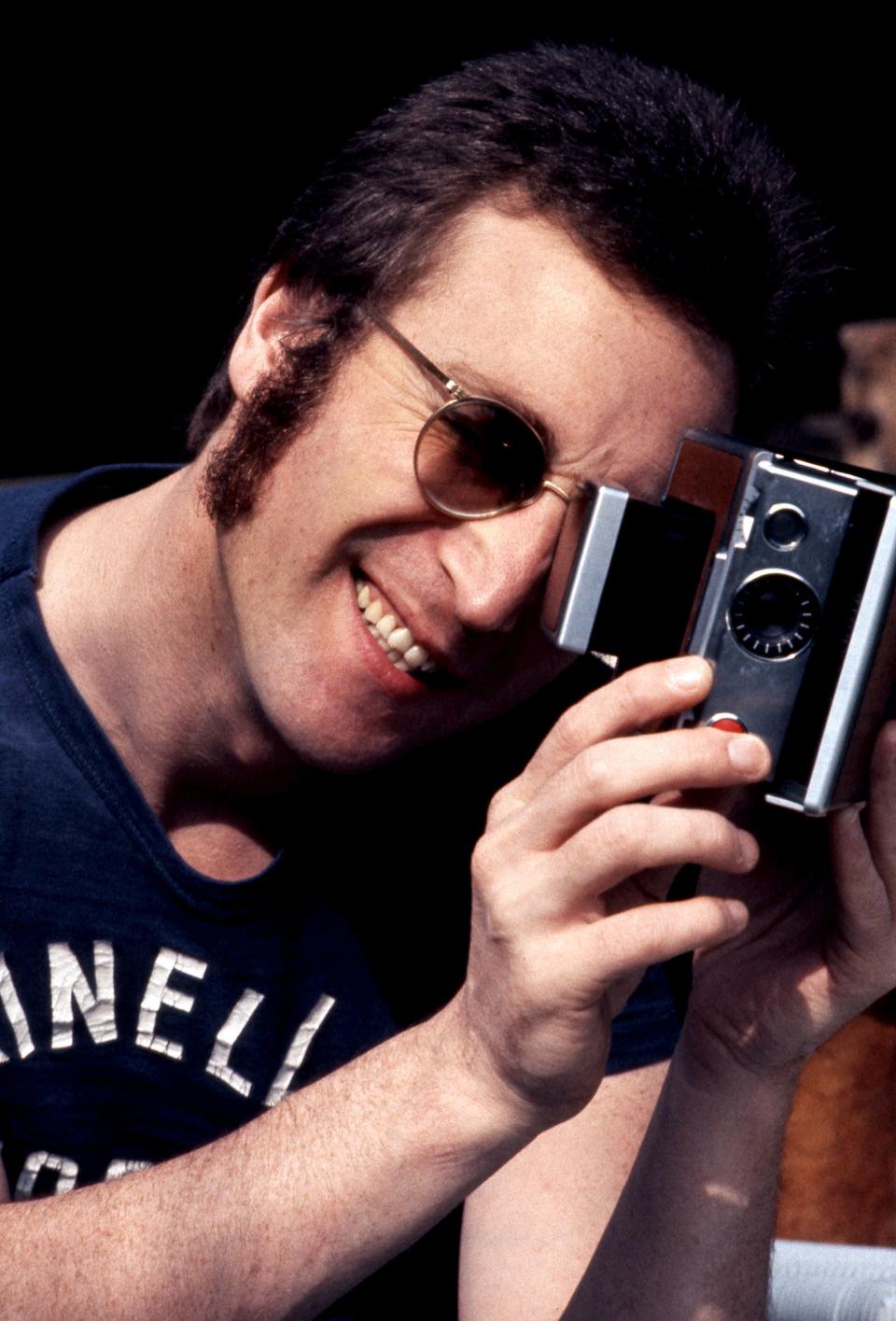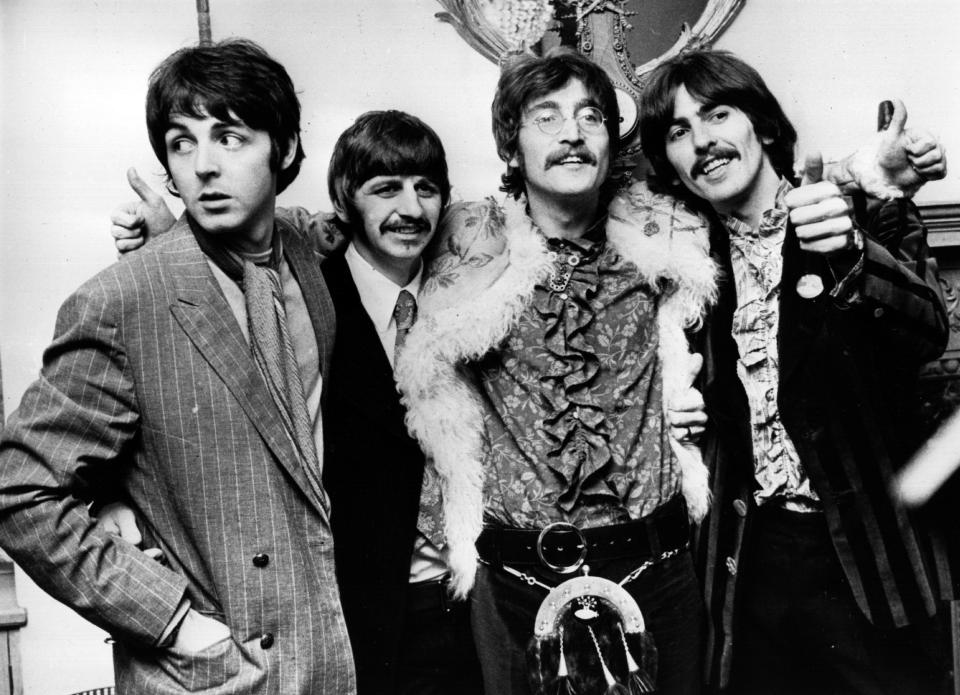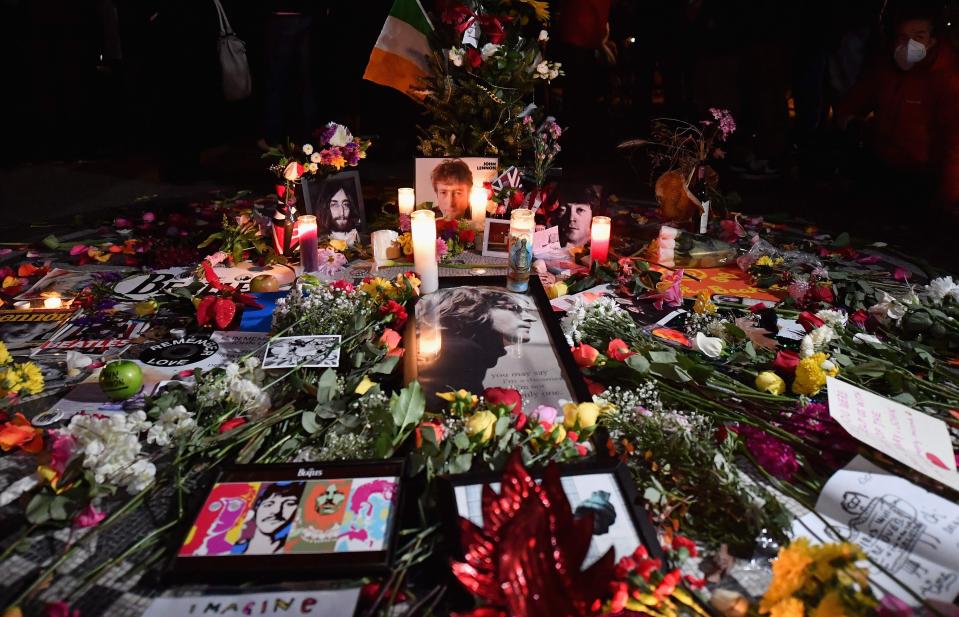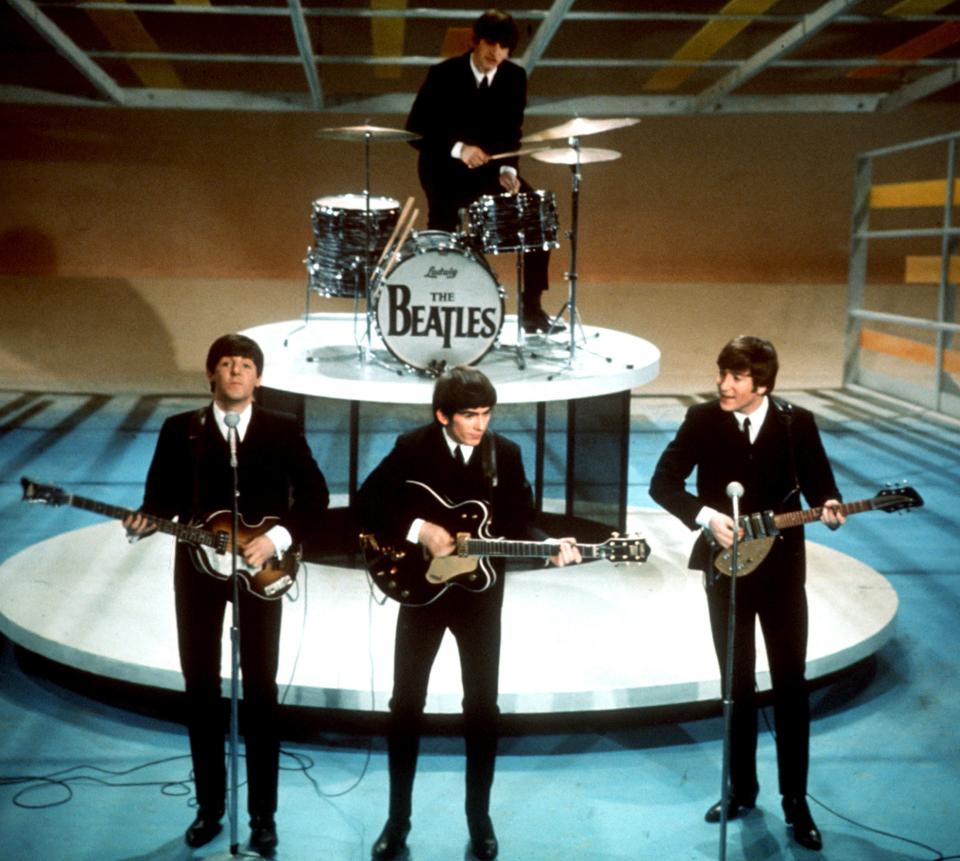John Lennon's murder comes back to painful view with eyewitness accounts in Apple TV+ doc
There are events that impact an entire generation, "where were you when" instants that remain seared in memory banks forever.
D-Day. The assassination of President John F. Kennedy. Sept. 11. And, for Beatles fans around the world, the killing of John Lennon.
A new three-part Apple TV+ documentary, "John Lennon: Murder Without A Trial" (out now), is sure to elicit a range of emotions from true bafflement from younger fans accustomed to today's inaccessible body-guarded stars to genuine post-traumatic stress disorder for Boomers who still can't believe Mark David Chapman simply walked up to the music icon in front of his New York apartment and ended his life on Dec. 8, 1980.
"To this day, it's hard to imagine John, one of the biggest stars in the world at that time, just wandering in and out of his building and meeting people for coffee, just as you couldn't imagine the Taylor Swift's of the world doing that today," says the doc's British director, Nick Holt. "He enjoyed New York precisely because he could move around as a free man. But ultimately, that worked against him."

Here is a primer on that infamous event based on conversations with both Holt and series producer Louis Lee Ray, as well as David Suggs, one of Chapman's defense attorneys who appears in the doc.
Who is Mark David Chapman?
Chapman, now 68, had a peripatetic life that included a Georgia childhood marked by abuse, drug experimentation and an obsession with religion and music, including that of the Beatles. His early adulthood found him doing a series of odd jobs that led to a trip around the world and, eventually, marriage in 1979 to a Japanese woman, Gloria Abe, and a hospital security job in Hawaii. He had once tried to commit suicide.
Chapman has been in jail since pleading guilty to murder, and his innumerable parole requests have been turned down thanks, in part, to letters from Lennon's widow, Yoko Ono. "Lennon" producers were in touch with Abe but declined to include new interviews with her or Chapman in the film.

"It's an odd relationship, theirs, and odd they're still together, but there's a bond through their shared fundamentalist religion," says Ray. "Ultimately, we debated whether to try and involve them and decided not to."
Is Mark David Chapman insane?
Chapman's lawyers were hoping he would be found not guilty by virtue of insanity in order to receive treatment while incarcerated, but Chapman upended those plans when he declared the night before the trial started that God had visited him in his cell and told him to plead guilty.
One of the doc's revelations is a series of audiotapes of interviews between a jailed Chapman and his lawyers, which were unearthed from a storage vault kept by a one-time People magazine reporter who had written about the case.
"I remember talking to him (in jail) and he'd seen normal one minute and the next, as you hear on the tapes in the documentary, he would tell us that he understood fully why he killed Lennon, which was to make sure people read the book he was reading at the scene, (J.D. Salinger's) 'The Catcher in the Rye,'" says Suggs. "His statements were not rational at any point."

Did the CIA have anything to do with Mark David Chapman killing John Lennon?
The documentary makes note of a variety of conspiracy theories that emerged in the wake of Lennon's shooting, including the theory that Chapman had been mind-controlled by government operatives who had Lennon on a watch list as a result of his outspoken condemnation of the war in Vietnam.
"This whole thing about the CIA being involved, when people mentioned it to me afterwards, I didn't even know it was a thing," says Suggs.
Holt says that his efforts to get a range of people who were involved at the time on the record should "dispel some of those crazier theories, and allow you to hopefully just weigh for yourself if this was an act spurred by mental health or pure evil."

How difficult was it to find people willing to open up about their connection to John Lennon's murder?
One hallmark of "Lennon" is the way the 43-year-old event is brought back into vivid focus thanks to candid and often emotional interviews with a host of now-elderly people who were literally at the scene of the murder or connected to its immediate aftermath.
These include the doorman at the Dakota, Lennon's famous New York apartment building, who breaks down recalling how he cradled the injured Beatle. There are also the beat cops who were dispatched to the building and recall bundling Chapman, who incredibly had simply remained on the scene after pulling the trigger, into a squad car. And there is the emergency room doctor, who initially doesn't believe that his patient is the John Lennon but winds up massaging his heart in a final effort to stave off death.
Getting them all required sending out countless letters and emails. Some declined to revisit that fateful night. But others such as cabbie Richard Peterson, dropped off a fare just as Lennon emerged from his limo as Chapman made his approach, gladly shared his unique perspective on history. "We asked him why he hadn't shared all this before," says Ray. "And he said, 'Because nobody ever asked.'"
This article originally appeared on USA TODAY: Who killed John Lennon? Beatles star's murder recalled in Apple doc

